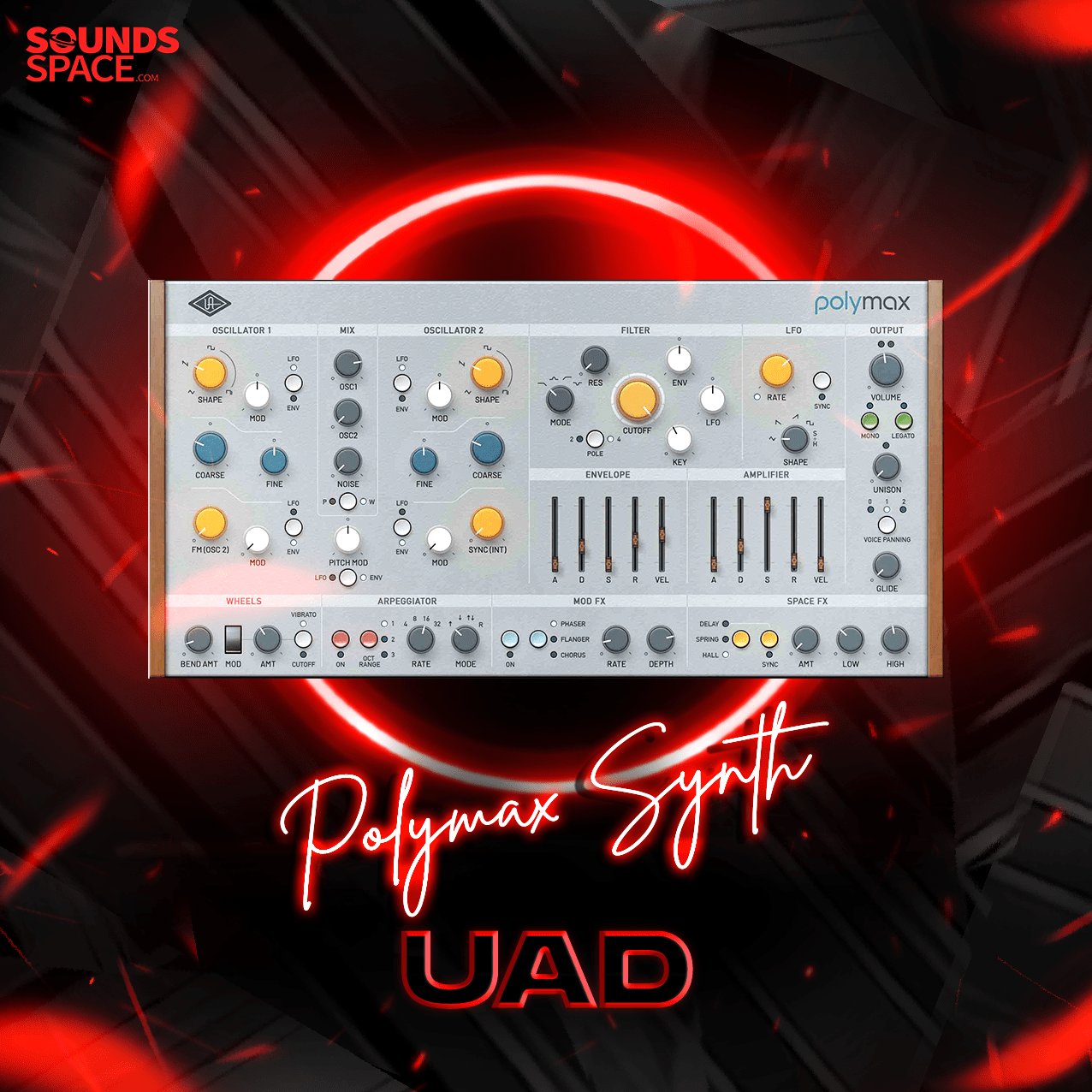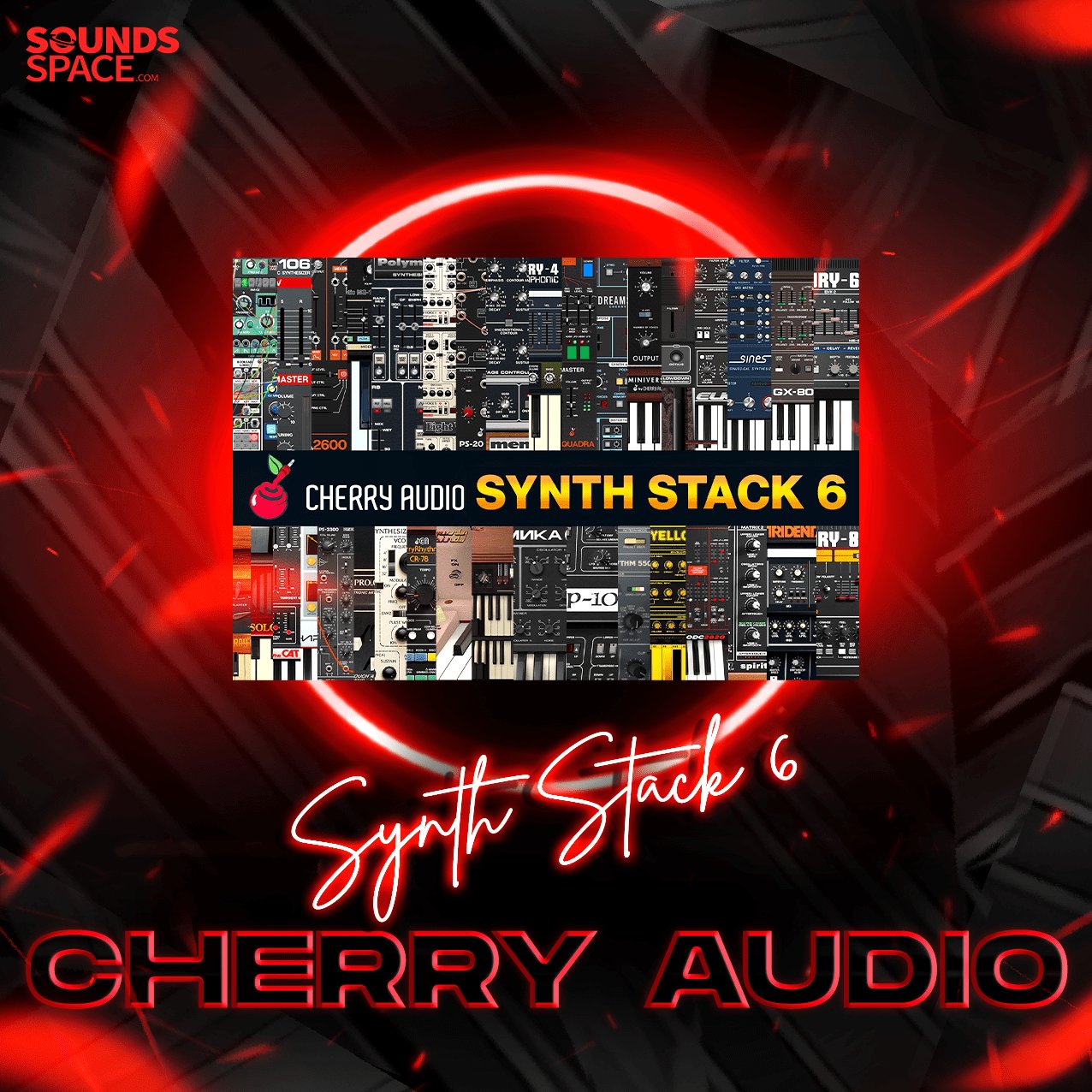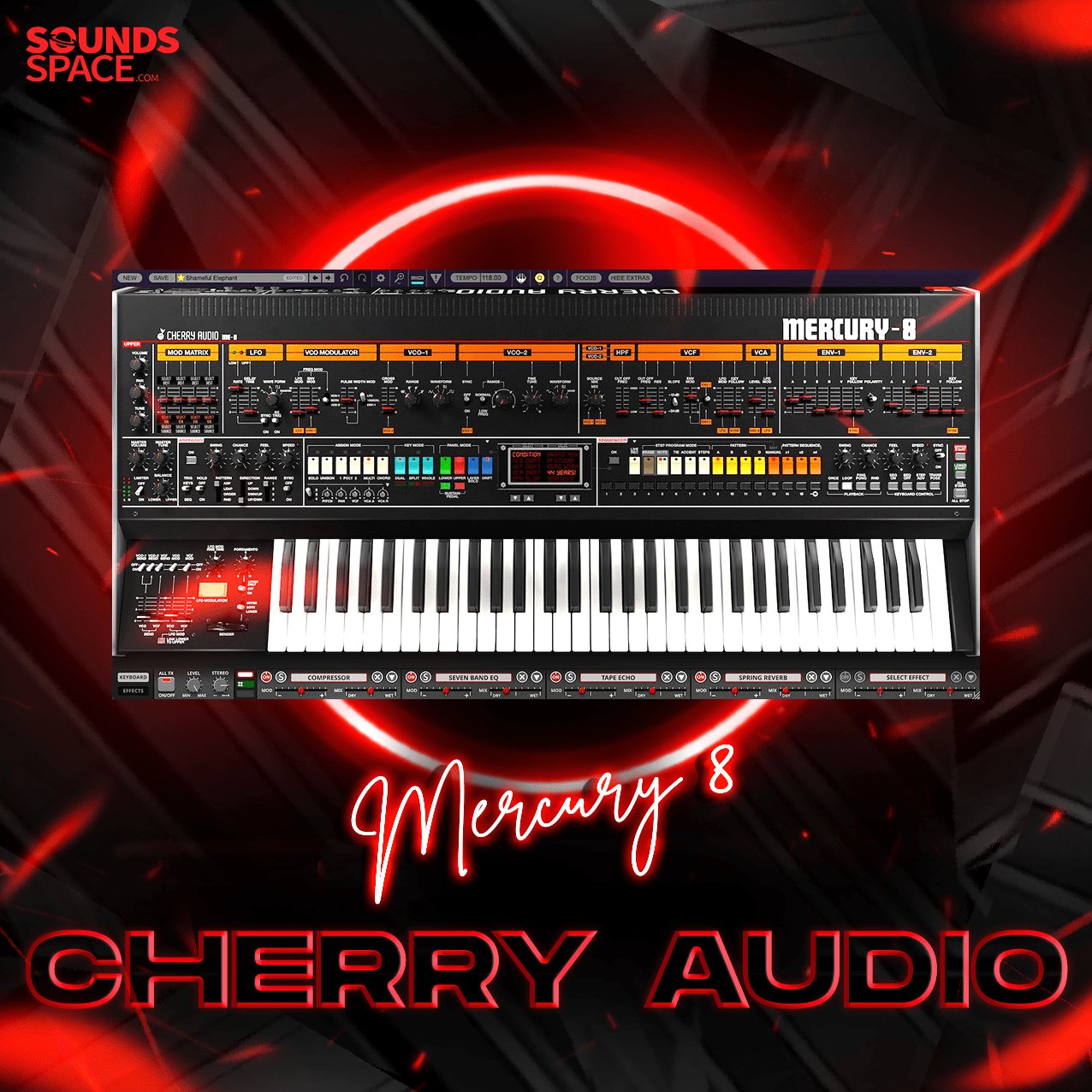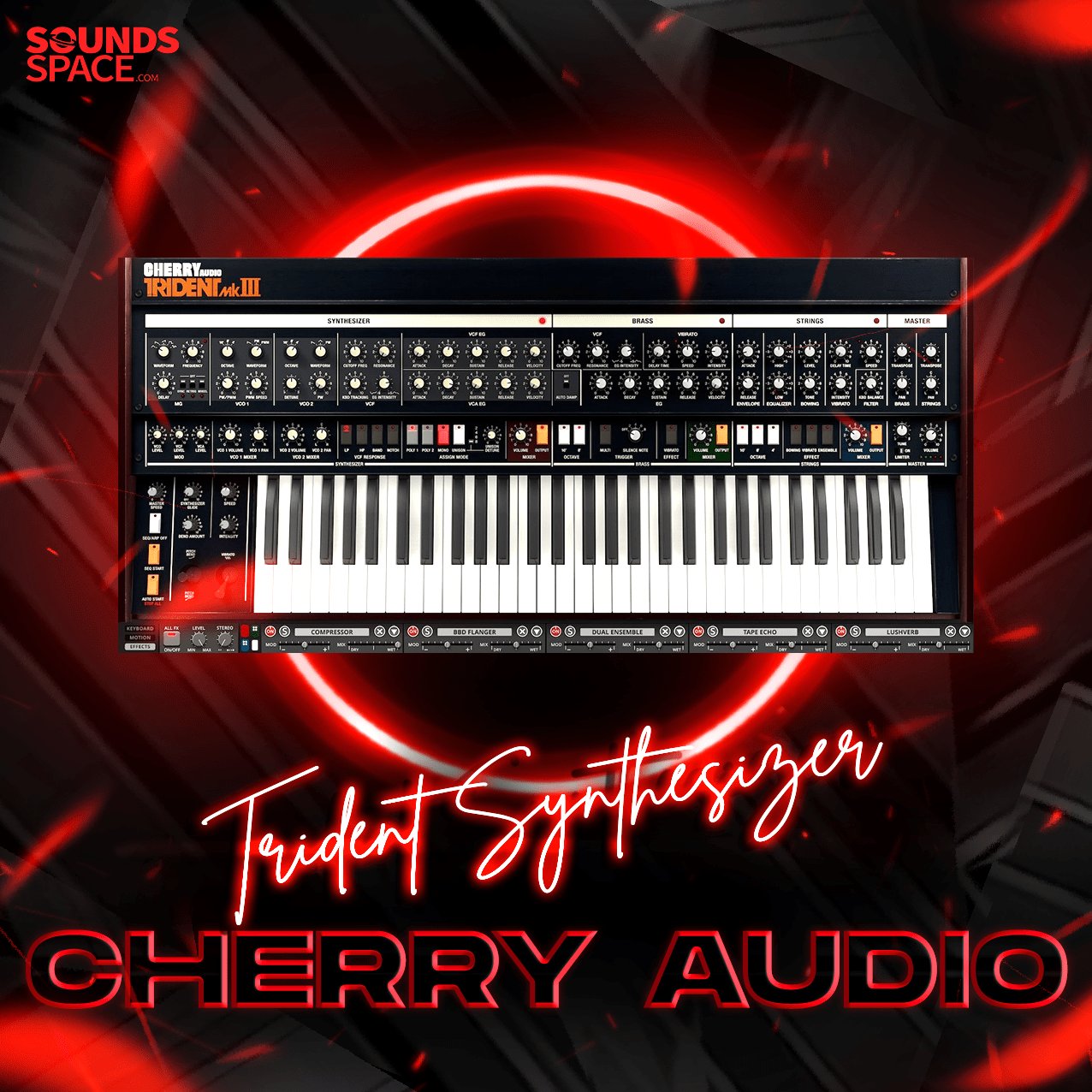Product Description

SynthMaster is an 'all-around' semi-modular software synthesizer and effect plug-in that features many different synthesis methods including VA, Additive, Wavetable, Wavescanning, Phase Modulation, Frequency Modulation, Pulse Width Modulation, Ring Modulation, Amplitude Modulation, Physical Modeling, and SFZ Sample Playback synthesis. With its multi-synthesis oscillators, analog modeled/digital filters, flexible effects routing with 11 types of high-quality effects, and a massive modulation architecture with 95 separate modulation sources and 650+ modulation targets; SynthMaster is a 'must-have' for all synthesizer enthusiasts!
Features
- Cross-platform VST, AU, and AAX: SynthMaster runs as a VST and AAX instrument on both Windows and Mac OSX, and as an Audio Unit instrument on Mac OSX.
- 1800 Factory Presets: SynthMaster comes with 1800 factory presets from a world-class team of sound designers: Arksun, BigTone, Michael Kastrup, Rob Lee, Umit 'Insigna' Uy, Ufuk Kevser, Aiyn Zahev, Frank 'Xenox' Neumann, Teoman Pasinlioglu, Nori Ubukata, Gercek Dorman, Vorpal Sound, and Brian 'Xenos' Lee.
- Semi-Modular Architecture: For each SynthMaster instance, there are 2 layers followed by 2 global effects send busses. Each layer has its own: Arpeggiator, 2 Oscillators, 4 Modulators, 2 Filters, 4 ADSR Envelopes, 2 Multistage Envelopes, 2 2D Envelopes, 2 LFOs, and 4 Keyscalers. The modulators can modulate the frequency, phase, amplitude, or pulse width of the oscillators or any other modulators at an audio rate.
- Massive Modulation Architecture: SynthMaster has more than 650 modulation targets and 95 modulation sources including ADSR Envelopes, 2D Envelopes, Multistage Envelopes, LFOs, KeyScalers, Easy Parameters, Vocoder Bands, MIDI Velocity, Aftertouch, Pitch Bend and MIDI CC. Each modulation target can have up to 3 modulation sources. The modulation matrix, which has 64 available slots, has visual filtering as well so that targets for a specific source or sources for a specific target can be filtered and shown on the user interface.
- Easy Parameters: SynthMaster features 8 easy knobs and 2 XY pads that can be freely assigned as modulation sources so that the complexity of the synth engine could be hidden away and only the most important parameters of a preset can be controlled by the user. The easy parameters can be globally linked to MIDI controllers, and they can be assigned automatically by SynthMaster as well.
- Powerful Arpeggiator: The arpeggiator in SynthMaster features classic arpeggiator modes such as Up, Down, UpDown, DownUp, UpDown2, DownUp2, AsPlayed as well as Sequence, Chord, and Arpeggiate modes. Each of the 32 steps of the arpeggiator has its own Velocity, Note Number, Note Length, Slide, and Hold parameters.
- Basic Oscillators: 'Basic' oscillators in SynthMaster are capable of synthesizing many different types of waveforms: Sine, Square, Triangle, Sawtooth, Pulse, Noise, Wavetable, and multi-sampled WAV/AIFFs defined in SFZ files.
- Additive Oscillators: An 'Additive' oscillator is actually 8 'basic' oscillators running together. Each 'basic' oscillator has its own detune, tone, phase/pulse width, frequency, and waveform type.
- Vector Oscillators: A 'Vector' oscillator consists of 4 'basic' oscillators, mixed at different ratios. The mix ratios are determined by 2 orthogonal parameters in 2 dimensions: 'X Index' and 'Y index.
- Wavescanning Oscillators: A 'Wavescanning' oscillator is similar to a basic oscillator, except that the waveform can be scanned (interpolated) through 16 different waveforms shapes. The position of the waveform can be adjusted using the 'wave index' parameter.
- Stereo Oscillators with Improved Unison: Oscillators in SynthMaster have stereo output. With the new "voices", "pan spread" and "detune spread" parameters, each basic/wave-scanning oscillator can have its own unison settings which eliminate the need to enable unison for all voice elements.
- Analog Filters: The 'analog' filters are modeled after the famous ladder filter, so they self oscillate when the filter resonance is maxed out. They have a continuously variable slope, which is unique to SynthMaster.
- Digital Filters: The 'digital' filters are biquad filters with a hard limiter in their output. The limiter features an envelope follower with attack, release, and threshold parameters.
- Multimode Filters: With the new 'multimode filter type, it is possible to switch from Lowpass to Bandpass to Highpass filter types continuously. For analog multimode filters, it is also possible to change the slope of the filter continuously from 0 dB/oct to 24 dB/Oct.
- Dual Filters: With the new 'dual' filter type, two multimode filters can be run simultaneously, either in parallel or in series. The mix ratios between the filters and the topology (parallel/series) between them can be changed continuously, as well as the modes and cutoff frequencies of the filters.
- Comb Filters: Comb filters are digital filters used in physical modeling synthesis.
- Before/Inside/After Filter Distortion: A distortion stage can be inserted before, after, or even inside the filters. For analog filters, the distortion is applied for each of the 4 filter stages in 'inside' mode.
- Rich Set of Effects: SynthMaster features 11 different effect types: Distortion, LoFi, Ensemble, Phaser, 6 Band EQ, Compressor, Vocoder, Delay, Chorus, Tremolo, Reverb.
- Flexible Effects Routing: Each of the 11 effect types can be inserted on any layer insert or on any of the 2 global effect bus inserts.
- Microtuning: SynthMaster supports Scala tuning, so tuning can be set either for each preset or globally by loading from a Scala tuning file.
- Preset Browser: SynthMaster features a comprehensive preset browser with separate search criteria for instrument type, preset attributes, music style, or preset author.
- Online Preset Browser: Registered users can upload their presets to the online preset library, or browse and download presets created by other registered users; using the preset browser right inside the plug-in window.
- Multiple Skins: SynthMaster comes with 3 different skins in different color variations. Using the included user interface editor, users can not only customize the existing skins but also can create their own custom interfaces as well.
- Importing MIDI patterns as Arpeggiator Sequence: Monophonic or even polyphonic (chord) MIDI patterns can be imported into the arpeggiators in SynthMaster by just drag and drop of the MIDI file onto the arpeggiator view on the plugin window.
- Importing WAV/AIFF Multisamples as SFZ definitions: Multisamples in WAV/AIFF formats could be imported into SynthMaster as SFZ definitions, by simply drag and drop of the WAV/AIFF files onto the oscillator waveform view on the plugin window.
New Features in Version 2.9.9
- New/Updated Skins with larger layout: Satyatunes created a new Dark skin for SynthMaster and updated the existing Tranquil Blue skin as well. Extended versions of the skins are provided as well, which include two tabs with pitch/mod wheels, piano keyboard, MIDI Modulation Sources, EZ knobs, and XY Pads. KV331 Audio states that putting those modulations sources right under the synth/fx modules would speed up the sound design workflow.
- Realtime Visual Feedback for Modulation Sources and Targets: This one was a heavily requested feature from SynthMaster users. Now users can clearly see how modulation sources and targets are changing when they play a note. The animations are optional, they can be turned on or off.
- Resize Skins Easily: Skins can now be resized by dragging the triangle arrows at the bottom right corner of the plugin user interface (as in SM1). Each skin comes with the following sizes: 100%, 120%, 140%, 160%, 180% and 200%.
- Better Support for Microtuning: SynthMaster 2.9.9 comes with 300+ scales ranging from 5 notes to 12 notes, in equal or alternate temperaments. The root note of the scale can be set globally.
- MIDI Learn for discrete controls: MIDI learn now works for all controls, including discrete controls and modulation matrix controls.
- Dynamic Effect Allocation: Insert effects can now be instantiated multiple times on multiple insert FX slots. As a comparison, prior versions of SynthMaster only allowed a fixed number of effects per instance (1 Delay, 1 Chorus, and 1 Reverb for instance).
- New Modulation Sources: Each layer in SynthMaster now has 4 ADSR envelopes, 4 Multisegmented envelopes, 4 LFOs, 4 Sequencers, 4 Keyscalers, and 2 2D Envelopes.
- Glide/Step LFOs in prior versions are now loaded as Sequencers.
- For LFOs and Sequencers, triggering can be set to Global, Single, Poly, and Random.
- Sequencers have up to 16 steps with individual initial/final levels and slopes.
- In dual-mode, 2 separate sequences can be created and morphed using the Crossfade parameter.
Preset Browser Improvements
- Instrument categories are now listed based on Native Instruments NKS standard. Favorite presets can be added/removed easily by clicking on the star icon next to the preset name.
- Users can upload their presets to the Public User Library that's hosted on the cloud
- Users can download presets from the Public User Library by clicking on the Online button.
Waveform/Sample Import Improvements: SynthMaster now differentiates between waveforms, wavetables or samples in a much better way, and imports them correctly. If it detects samples that are part of a multisample or drumkit, the sfz multisample definition is created automatically.
QWERT Keyboard Input: SynthMaster now supports MIDI input by pressing keys on the computer QWERT keyboard. This allows the user to play notes or record arp steps without having a MIDI controller. Left/Right arrows are used to change the octave while Up/Right arrows are reserved for changing the current preset.
MPE Mode: SynthMaster now conforms to MPE standard much better: Each preset now has a MIDI Channel parameter, which can be set globally as well. When MIDI Channel is set to "MPE" mode, MIDI Channel 1 is used as the Global channel as per the standard. Mono presets in SynthMaster behave correctly (they play polyphonic since MPE sends MIDI in multiple channels).
View Installation Instructions
System Requirements
SynthMaster comes in the following formats:
VST Instrument & Effect
- Windows 7 and above
- Mac OS X 10.9 and above
- 2 GB RAM
- 2.0 Ghz, Intel SSE3 instruction set CPU
- VST Host supporting VST 2.4 plugins
AU Instrument & Effect
- Mac OS X 10.9 and above
- 2 GB RAM,
- 2.0 GHz, Intel SSE3 instruction set CPU
- AU Host application
AAX Instrument
- Windows 7 and above
- Mac OS X 10.9 and above
- 2 GB RAM
- 2.0 Ghz, Intel SSE3 instruction set CPU
- ProTools 11 and above












































































































































































